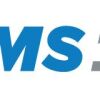There has been a 400 percent increase in overdose deaths from 1999 to 2008, and opioid overdose is now the leading cause of accidental death in the United States. Medication-assisted treatment, including suboxone and rehab are two options for care community paramedics. But community paramedicine can deliver harm reduction education, like safe needle use, to opioid addicts who are not ready for addiction recovery.
Dan Swayze, Center for Emergency Medicine chief operating officer and vice president, presented community paramedicine intervention as an alternative pathway to respond to the opioid crisis for EMS professionals recently gathered in Salt Lake City.
Swayze’s new program has just received its first group of 20 patients from the health system. Community paramedics are beginning to reach out to the group of patients who meet the criteria for high emergency department drug seeking.
Would you be willing show your heroin user how to shoot up safely? Who is showing them [addicts] how to shoot up? [A community could ask a patient], ‘If you are using and not interested in quitting let’s discuss how to use safely,” said Swayze.
Swayze said the role of community paramedics in the treatment of addiction begins with overdose treatment and continues through post-discharge follow-up and readiness to help addicts receive recovery treatments.
Understanding addiction pathophysiology is critical. Swayze, using several educational videos, described the pathophysiology of addiction. In another video, an addict described his use of heroin not to get high, but just to feel normal. Withdrawal is an unpleasant experience for the addict. EMS providers need to let go of the notion that opioid addiction is a choice that the addict can control and that this is somehow a self-limiting problem, according to Swayze.
Leveraging community paramedic response is based on the language and care techniques of addiction medicine. Swayze’s key points were:
#1 Community Paramedicine Intervention After Discharge
After discharge from jail or mental health services is an extremely vulnerable time for overdose death. A community paramedic can be part of the system of care to help an addict avoid relapse to previous behaviors by helping the patient get to rehab, make lifestyle changes, attend group meetings and keep other outpatient appointments.
#2 Community Paramedicine Intervention for Harm Reduction
Widely available naloxone is just one component of a harm reduction effort for opioid addicts. Community paramedics can also deliver other harm reduction messages, such as not sharing needles. Teaching family members to understand the science of addiction and how to use naloxone is another harm reduction technique to prevent addicts from using heroin alone or in a locked room. Harm reduction is not enabling use -- it’s purpose is to keep an addict safe until the patient is ready for rehab and long-term treatment.
#3 Community Paramedicine with Safe Stations
Swayze described the need for safe stations. EMS, fire and police safe stations are places for addicts who are seeking addiction recovery treatment to ask for help without fear of arrest or incarceration.













